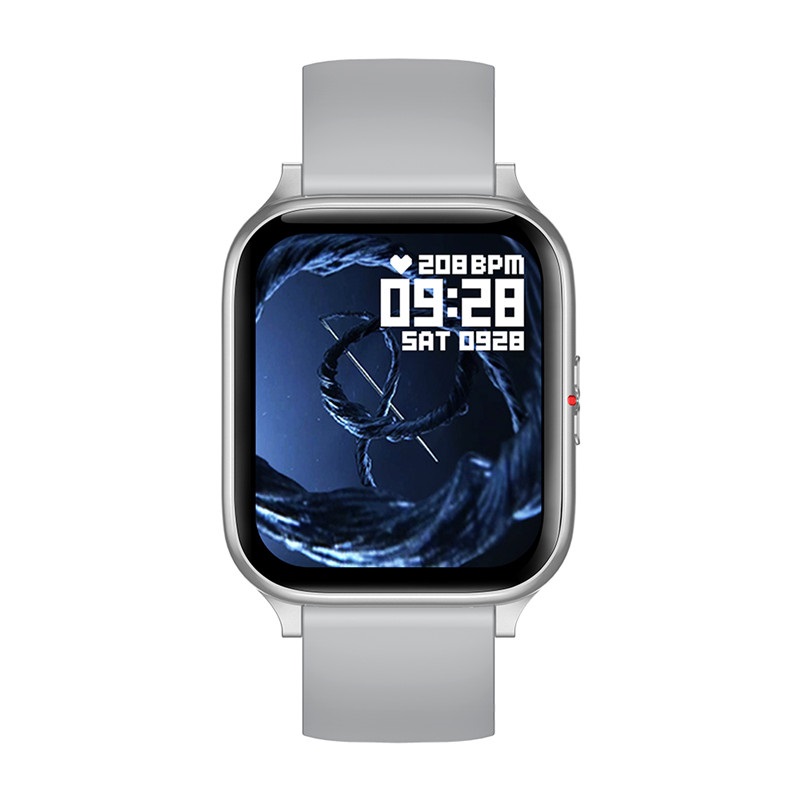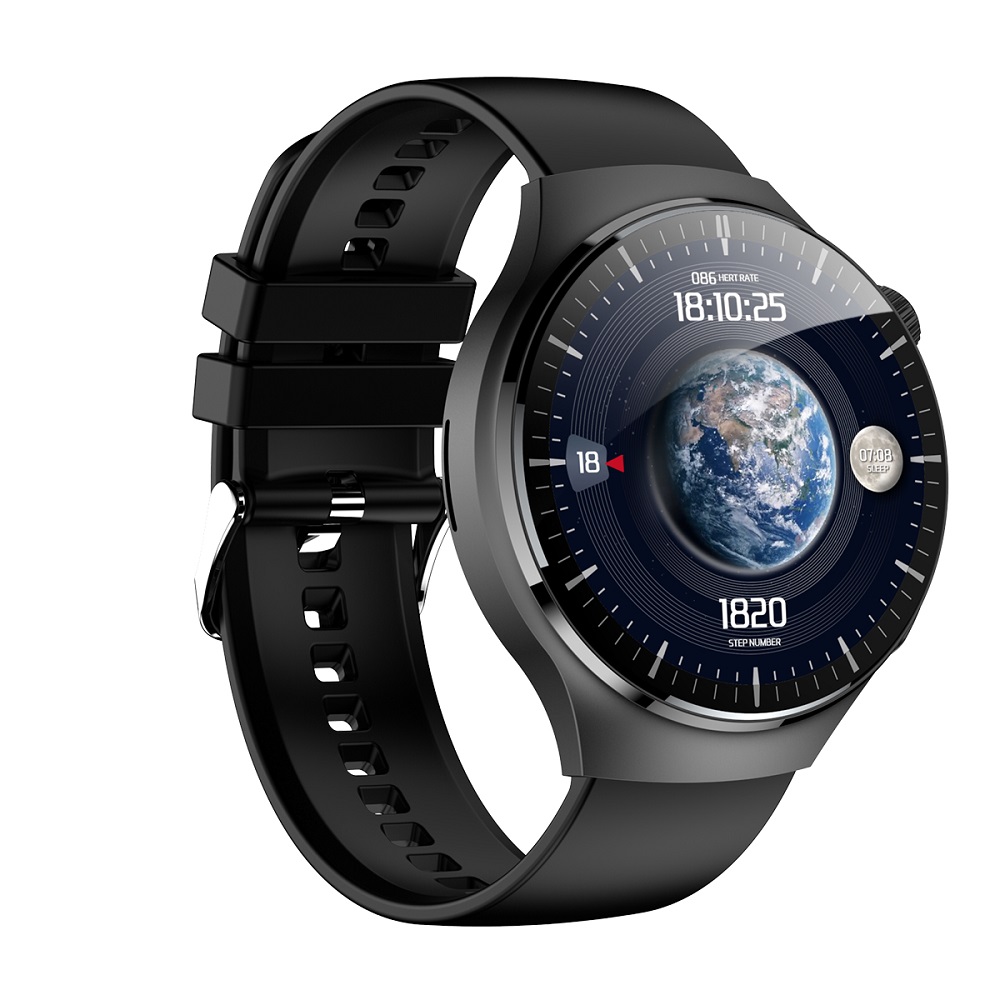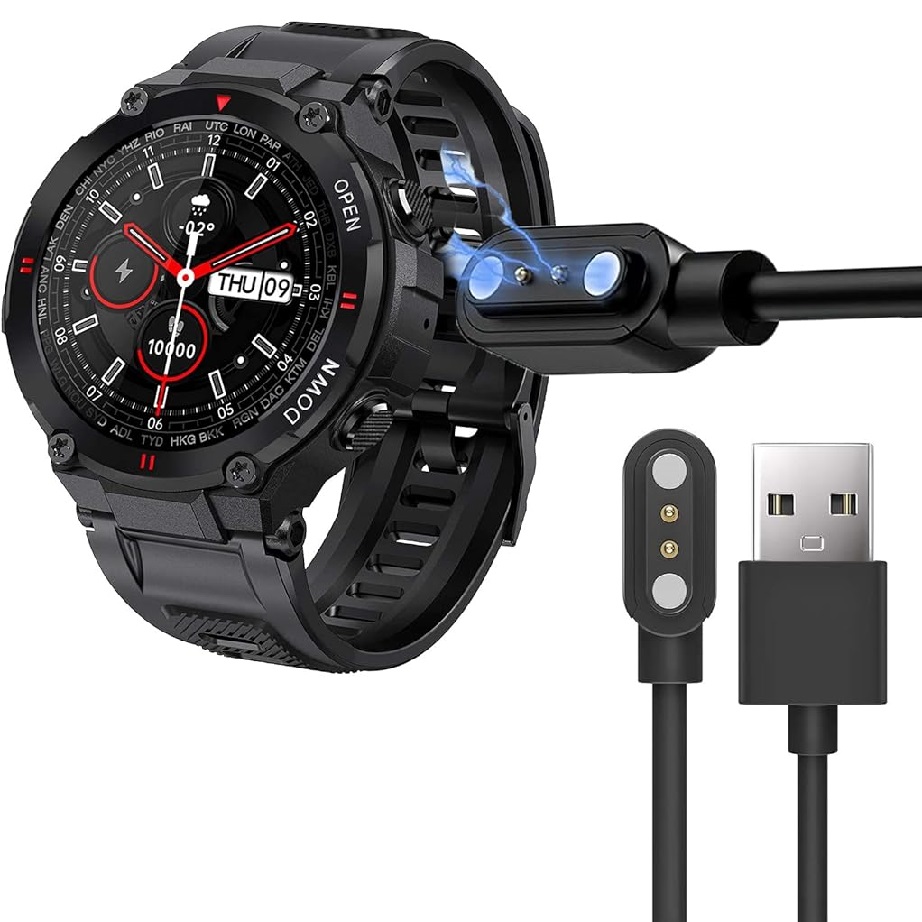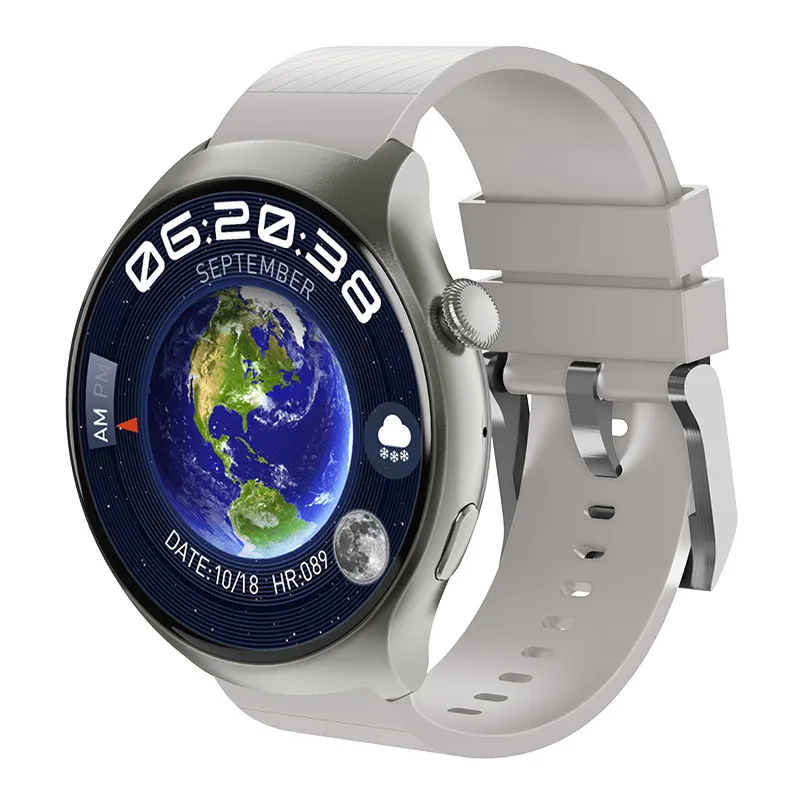Introduction to Smart Watch Charging
Charging a smart watch seems straightforward. However, doing it correctly can extend your device‘s lifespan. This introduction will help you understand ‘how to charge smart watch’ correctly. First, ensure you have the right equipment. Use the charger that came with your watch. It’s designed to match your watch’s power requirements. Next, find a stable power source. Avoid using laptops or computers for charging. Their USB ports may not provide consistent power. For a full charge, plug your smart watch directly into a wall outlet. Keep the charging area cool and dry. Excessive heat or moisture can harm the battery. Finally, don’t wait for the battery to drain completely before recharging. It’s best to charge your smart watch when the battery level drops to around 10%. Remember, proper charging practices can go a long way in maintaining your smart watch’s efficiency.
Types of Smart Watch Chargers
When learning how to charge a smart watch, knowing the different types of chargers available is essential. Various smart watches are compatible with different chargers, each designed to meet specific power needs and convenience features.
Wired Chargers
Most smart watches come with a wired charger, which is the standard method for recharging. These chargers usually have a USB end that connects to a power adapter or directly into a power outlet. Ensure that you use the charger provided by the manufacturer to avoid any potential damage or inefficiency.
Magnetic Chargers
Many modern smart watches use magnetic chargers. These chargers connect to the watch with magnets, making them easy to attach. This type avoids the need for plugging and unplugging, which can wear out the charging ports over time.

Docking Stations
Docking stations serve as a base where you can place your smart watch to charge overnight or when not in use. Some docking stations offer additional functionalities like extra USB ports for charging other devices or built-in alarm clocks.
Wireless Charging Pads
Wireless charging is becoming increasingly popular and convenient. They use induction to charge the smart watch without needing physical connectors. You simply place your watch on the charging pad, and it starts charging. However, not all smart watches are compatible with wireless charging, so check your device’s specifications.
Choosing the right type of charger for your smart watch not only ensures efficient charging but also helps maintain the battery’s health and longevity. Always refer to your smart watch’s user guide to determine the best charging option for your device.
Steps to Charge Your Smart Watch
When learning how to charge a smart watch, follow these simple steps:
Locate the Charging Contacts
First, identify the charging contacts on your smart watch. These are usually metallic areas on the back of the watch.
Connect the Charger
Using the original charger, connect it to the charging contacts. If it’s magnetic, it should snap into place easily.
Plug into Power Source
Plug the other end of the charger into a wall outlet. Avoid using a computer or laptop USB port.
Confirm the Connection
Check for a charging symbol on your smart watch to ensure it’s properly connected. You may also hear a sound or feel a vibration.
Charge Until Full
Leave your watch charging until it reaches 100%. Regularly charging it to full helps calibrate the battery.
Unplug After Charging
Once fully charged, disconnect your smart watch. This helps prevent overcharging which can reduce battery life.
Remember, using the correct charger and following these steps will help maintain your watch’s battery health.
Maximizing Battery Life and Charge Cycles
To get the most out of your smart watch’s battery, a few key practices are critical. These will maximize battery life and the number of charge cycles your device can support.
Understand Charge Cycles
Every battery has a fixed number of charge cycles before its performance begins to degrade. A charge cycle happens when you use 100% of the battery’s charge, not necessarily in one go. It could be over a day or two, depending on your use.
Avoid Extreme Temperatures
Heat and cold extremes can reduce battery life. Try to charge and store your smart watch in a place with a moderate temperature.
Update Your Watch’s Software
Manufacturers often release software updates that can improve battery efficiency. Keep your smart watch updated to benefit from these improvements.
Limit Notifications and App Usage
If your smart watch is buzzing with notifications or if many apps are running, the battery drains faster. Customize notification settings and close unnecessary apps to save power.
Optimize Charging Times
Don’t charge your smart watch all night or let the battery run flat before charging. Instead, charge it when it’s between 10% to 85% to avoid stress on the battery.
By following these tips, you can help extend the life of your smart watch’s battery and enjoy more charge cycles. Remember, proper maintenance goes a long way in preserving the efficiency of your device.
Troubleshooting Common Charging Issues
While learning how to charge smart watches properly, you may encounter some common problems. Addressing these quickly ensures your smart watch remains functional and charged. Let’s discuss some frequent charging issues and how to fix them.
Watch Is Not Charging
If your smart watch fails to charge, check the basics first. Ensure the charger is plugged in securely and the power source is on. Confirm that your charging cable and adapter are not damaged. If using a docking station or wireless pad, align the watch correctly with the contacts.
Slow Charging
Slow charging could mean a problem with your power source or charger. For faster charging, use a wall outlet instead of a USB port on a laptop or computer. Also, check that your cable and adapter are the ones provided by the manufacturer.
Battery Drains Quickly After Charging
If the battery depletes fast, limit your app usage and notifications. Ensure your smart watch software is up to date. Sometimes, a simple restart of your smart watch can fix battery drain issues.
Watch Gets Hot While Charging
Heat can harm your smart watch’s battery. If your device gets hot, remove it from the charger. Let it cool before attempting to charge again. Make sure you charge your watch in a cool and dry place.
By keeping an eye out for these common issues, you can troubleshoot effectively. Keep your smart watch’s charging components in good shape, and always use the correct methods outlined earlier. This will help you avoid many of the common charging problems, ensuring your smart watch stays powered and ready for use.
Best Practices for Charging Your Smart Watch Safely
To ensure safety and longevity for your smart watch, follow these best practices while charging:
Use the Manufacturer’s Original Charger
Always use the charger that comes with your smart watch. It’s tailored to your device’s specific needs.
Charge in a Safe Environment
Find a place free from moisture and excessive heat. This protects both the charger and your smart watch.
Avoid Overnight Charging
Don’t leave your smart watches plugged in all night. Remove it once it’s fully charged to prevent overcharging.
Monitor Charging Progress
Keep an eye on the charging status. Unplug your watch once the battery reaches 100%.
Handle Chargers Gently
Take care when connecting and disconnecting your charger. Rough handling can damage the charging ports.
Store Chargers Properly
When not in use, keep your charger in a safe place. This prevents damage and potential hazards.
Following these steps will help keep your smart watches in excellent condition, ensuring it’s ready to assist you day after day. Use these guidelines next time you charge your smart watch for the best results.
Understanding Smart Watch Battery Technology
To charge a smart watch effectively, we must grasp the battery technology it employs. Smart watch batteries employ lithium-ion or lithium-polymer technology, offering a balance between size and capacity.
Lithium-Ion vs. Lithium-Polymer Batteries
Most smart watches come equipped with lithium-ion batteries. These are known for higher energy density and longer charge cycles. On the other hand, some manufacturers prefer lithium-polymer batteries as they can be slimmer and lighter, which is ideal for the compact design of a smart watch.
Battery Capacity and Performance
Battery capacity is measured in milliampere-hours (mAh), indicating how much charge a battery can hold. A higher mAh means longer battery life between charges, but also a potential increase in size. Performance, over time, can diminish as the battery undergoes more charge cycles.
Maintaining Battery Health
Smart watch batteries have a finite number of charge cycles. To maximize their lifespan, follow proper charging techniques and avoid extreme temperatures. Using the appropriate charger, as recommended by the manufacturer, is crucial for maintaining good battery health.
Advanced Battery Features
Some smart watches are equipped with features such as fast charging or power-saving modes that help manage battery life. Familiarize yourself with these features to take full advantage of your device’s capabilities.
By understanding these core principles of smart watch battery technology, you’re equipped to charge your device in a way that ensures longevity and optimal performance. Keep these considerations in mind as you implement the charging tips detailed in the previous sections of this guide.
FAQs on Charging Smart Watches
When it comes to keeping your smart watches powered, you might have a few questions. Here are some of the most common FAQs about how to charge smart watches and the answers to help you maintain your device efficiently.
Can I Use Any Charger With My Smart Watches?
No, you should use the charger that came with your smart watches. This ensures it matches your device’s power needs.
How Often Should I Charge My Smart Watches?
Charge it when the battery level drops to around 10%. Avoid letting it run flat before charging.
Is It Okay to Leave My Smart Watch Charging Overnight?
It’s best not to. Overcharging can reduce the battery’s lifespan. Remove it once it’s fully charged.
Why Is My Smart Watch Not Charging Properly?
Check that the charger is secure and the power source is on. Confirm that no damage is visible on the cable or adapter.
Can I Use a Wireless Charger for My Smart Watches?
If your device supports it, yes. Check your smart watch’s specs to confirm wireless charging compatibility.
What Should I Do If My Smart Watches Gets Hot While Charging?
Remove it from the charger and let it cool. Charge in a cool, dry place to avoid heat damage.
How Long Does a Smart Watch Battery Last Before Needing Replacement?
Battery life varies widely. Following proper charging practices can help it last around 2-3 years.
By keeping these FAQs and their answers in mind, you can charge your smart watches effectively and safely. Remember, proper charging maximizes battery life and helps maintain your smart watch’s functionality.


